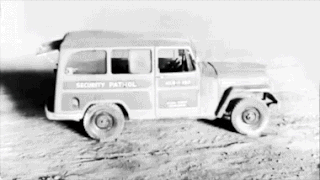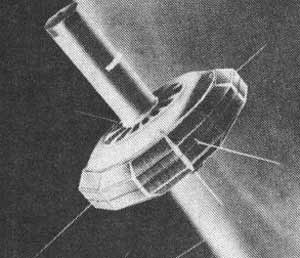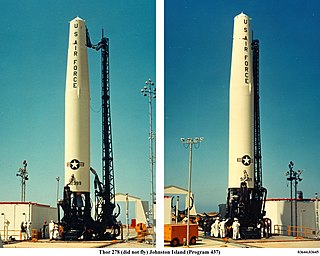A nuclear electromagnetic pulse is a burst of electromagnetic radiation created by a nuclear explosion. The resulting rapidly varying electric and magnetic fields may couple with electrical and electronic systems to produce damaging current and voltage surges. The specific characteristics of a particular nuclear EMP event vary according to a number of factors, the most important of which is the altitude of the detonation.

Operation Argus was a series of United States low-yield, high-altitude nuclear weapons tests and missile tests secretly conducted from 27 August to 9 September 1958 over the South Atlantic Ocean. The tests were performed by the Defense Nuclear Agency.

Anti-satellite weapons (ASAT) are space weapons designed to incapacitate or destroy satellites for strategic or tactical purposes. Although no ASAT system has yet been utilized in warfare, a few countries have successfully shot down their own satellites to demonstrate their ASAT capabilities in a show of force. ASATs have also been used to remove decommissioned satellites.

The effects of a nuclear explosion on its immediate vicinity are typically much more destructive and multifaceted than those caused by conventional explosives. In most cases, the energy released from a nuclear weapon detonated within the lower atmosphere can be approximately divided into four basic categories:

Nuclear weapons tests are experiments carried out to determine the performance, yield, and effects of nuclear weapons. Testing nuclear weapons offers practical information about how the weapons function, how detonations are affected by different conditions, and how personnel, structures, and equipment are affected when subjected to nuclear explosions. However, nuclear testing has often been used as an indicator of scientific and military strength. Many tests have been overtly political in their intention; most nuclear weapons states publicly declared their nuclear status through a nuclear test.

The Transit Research and Attitude Control (TRAAC) satellite was launched by the U. S. Navy from Cape Canaveral along with Transit 4B on November 15, 1961.

Starfish Prime was a high-altitude nuclear test conducted by the United States, a joint effort of the Atomic Energy Commission (AEC) and the Defense Atomic Support Agency. It was launched from Johnston Atoll on July 9, 1962, and was the largest nuclear test conducted in outer space, and one of five conducted by the US in space.

The militarisation of space involves the placement and development of weaponry and military technology in outer space. The early exploration of space in the mid-20th century had, in part, a military motivation, as the United States and the Soviet Union used it as an opportunity to demonstrate ballistic-missile technology and other technologies having the potential for military application. Outer space has since been used as an operating location for military spacecraft such as imaging and communications satellites, and some ballistic missiles pass through outer space during their flight. As of 2018, known deployments of weapons stationed in space include only the Almaz space-station armament and pistols such as the TP-82 Cosmonaut survival pistol.

Operation Fishbowl was a series of high-altitude nuclear tests in 1962 that were carried out by the United States as a part of the larger Operation Dominic nuclear test program.
The Christofilos effect, sometimes known as the Argus effect, refers to the entrapment of electrons from nuclear weapons in the Earth's magnetic field. It was first predicted in 1957 by Nicholas Christofilos, who suggested the effect had defensive potential in a nuclear war, with so many beta particles becoming trapped that warheads flying through the region would experience huge electrical currents that would destroy their trigger electronics. The concept that a few friendly warheads could disrupt an enemy attack was so promising that a series of new nuclear tests was rushed into the US schedule before a testing moratorium came into effect in late 1958. These tests demonstrated that the effect was not nearly as strong as predicted, and not enough to damage a warhead. However, the effect is strong enough to be used to black out radar systems and disable satellites.

Program 437 was the second anti-satellite weapons program of the U.S. military. The US anti-satellite weapons program began development in the early 1960s and was officially discontinued on 1 April 1975. Program 437 was approved for development by U.S. Secretary of Defense Robert McNamara on November 20, 1962, after a series of tests involving high altitude nuclear explosions. The program's facilities were located on Johnston Island, an isolated island in the north central Pacific Ocean.

A nuclear explosion is an explosion that occurs as a result of the rapid release of energy from a high-speed nuclear reaction. The driving reaction may be nuclear fission or nuclear fusion or a multi-stage cascading combination of the two, though to date all fusion-based weapons have used a fission device to initiate fusion, and a pure fusion weapon remains a hypothetical device. Nuclear explosions are used in nuclear weapons and nuclear testing.
Nuclear MASINT is one of the six major subdisciplines generally accepted to make up Measurement and Signature Intelligence (MASINT), which covers measurement and characterization of information derived from nuclear radiation and other physical phenomena associated with nuclear weapons, reactors, processes, materials, devices, and facilities. Nuclear monitoring can be done remotely or during onsite inspections of nuclear facilities. Data exploitation results in characterization of nuclear weapons, reactors, and materials. A number of systems detect and monitor the world for nuclear explosions, as well as nuclear materials production.
Radioflash is a term used in early literature on the phenomena now known more widely as nuclear electromagnetic pulse, or EMP. The term originated in the early 1950s, primarily associated with the "click" typically heard on radio receivers when a nuclear bomb was detonated. It was later discovered that the phenomena was one part of the more wide-ranging set of effects resulting from EMPs after the detonation of a nuclear weapon.
An electromagnetic pulse (EMP), also referred to as a transient electromagnetic disturbance (TED), is a brief burst of electromagnetic energy. The origin of an EMP can be natural or artificial, and can occur as an electromagnetic field, as an electric field, as a magnetic field, or as a conducted electric current. The electromagnetic interference caused by an EMP can disrupt communications and damage electronic equipment. An EMP such as a lightning strike can physically damage objects such as buildings and aircraft. The management of EMP effects is a branch of electromagnetic compatibility (EMC) engineering.
The Soviet Union's K project nuclear test series was a group of five nuclear tests conducted in 1961–1962. These tests followed the 1961 Soviet nuclear tests series and preceded the 1962 Soviet nuclear tests series.
Nuclear blackout, also known as fireball blackout or radar blackout, is an effect caused by explosions of nuclear weapons that disturbs radio communications and causes radar systems to be blacked out or heavily refracted so they can no longer be used for accurate tracking and guidance. Within the atmosphere, the effect is caused by the large volume of ionized air created by the energy of the explosion, while above the atmosphere it is due to the action of high-energy beta particles released from the decaying bomb debris. At high altitudes, the effect can spread over large areas, hundreds of kilometers. The effect slowly fades as the fireball dissipates.

STARAD was a radiation-monitoring satellite used to track the artificial radiation belt created by the Starfish Prime high-altitude nuclear test.

















